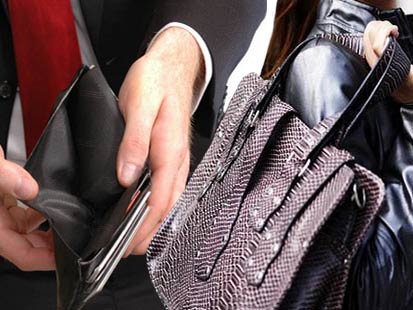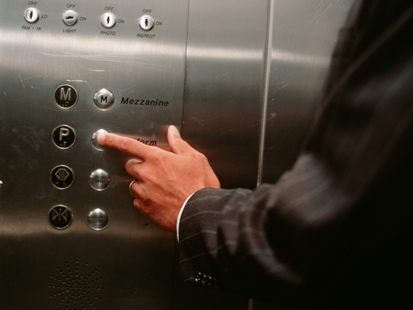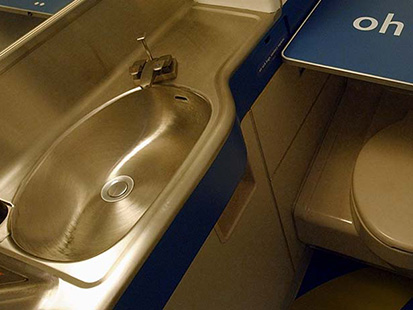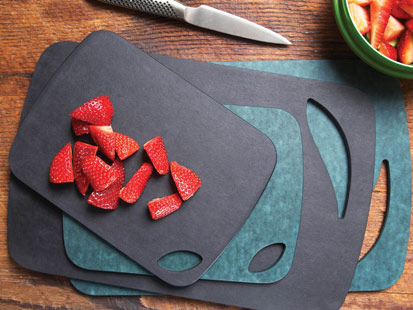Ten Places Where Germs Lurk
Everyday objects can have unexpectedly large numbers of germs.
Oct. 26, 2008 -- Almost every medical or microbe expert in the world will cheerfully tell you the same thing: germs are everywhere, whether you like it or not.
Saunter across the room and you're swimming in a soup of airborne organisms.
Sit on a chair and you're bringing bacteria with you the next time you get up.
"There's very few surfaces that are truly clean," said Dr. Aaron Glatt, president and CEO of New Island Hospital in Bethpage, N.Y., and a spokesman for the Infectious Disease Society of America. "You're almost never going to culture something and not find some germs on it."
And humans are some of the worst germ offenders.
"Ninety percent of you is composed of germ cells," said Phillip Tierno, director of clinical microbiology and immunology at NYU and author of "The Secret Life of Germs."
Not that people should be overly concerned about becoming ill. According to Tierno, only about 1 to 2 percent of the 60,000 types of germs people come in contact with daily are potentially dangerous to people with normal immunity.
A few precautions -- using disinfectants, hand-washing, and keeping hands away from the face -- should be more than sufficient to avoid illnesses or viruses.
Still, the higher the density of microbes on a particular object, the higher the chances of coming in contact with them as well as coming in contact with potentially harmful ones.
Visit the OnCall+ Cold & Flu Center
For those curious souls who want to go the extra mile in understanding just how massive the microorganism populations are in some places, here are a few germy surfaces your cleaning supplies will be happy to get to know.
Laundry Machines
The laundromat is hardly a bower of cleanliness, but even laundry done at home is rife with germs.
There is about 0.1 gram of fecal material in a piece of underwear, Gerba said. That amounts to approximately 100 million E. coli bacteria in an average undergarment load.

Unfortunately, only 5 percent of people use very hot water to wash their clothes and then dry them for a full 45 minutes, a process Gerba said would kill more bacteria. Skipping these steps means that transferring wet clothing into a dryer leaves a film of germs all over your hands.
To minimize exposure to harmful bacteria, Gerba recommends doing laundry that requires bleach as a first load to disinfect the machines and save undergarments for a final load. He also cautions against using the same sorting tables for clean and dirty laundry since the E. coli from the dirty clothes will transfer to the table and then back onto your freshly laundered clothes.
"Your clothes are a lot germier than they were 50 years ago," Gerba said. "Never kiss anyone who has just done laundry for you."
Gear Shift
By spending time behind the wheel, people may unknowingly be acting as chauffeurs to a menagerie of invisible passengers.

In a recent British study done for insurance.co.uk, microbiologists randomly tested both the interiors and trunks of 25 cars. They found that the typical British automobile had, on average, 285 types of bacteria present in every square inch of the vehicle. They identified at least 10 major types of bacteria.
Anthony Hilton, a microbiologist from Ashton University who led the study, believed steering wheels would house the most germs, as might other frequently touched areas such as door handles and seat belts.
But he was mistaken. Stick shifts, which harbor 356 germs per square inch, did worse, likely because they have a smaller surface area that concentrates the bugs.
Dashboard
Compared to British cars, American cars aren't much cleaner. In 2006, Gerba and a colleague did a larger study, swabbing interiors of 100 automobiles in five locations: Arizona, California, Florida, Illinois and Washington, D.C.

Gerba suspected that the dashboard was one of the most germ-laden locations in a car because it is one of the warmest places and has ventilation systems on either side that can aerate spores, blowing them out among unsuspecting passengers.
Indeed, the dashboard was one of the top hot spots for microorganisms, along with change holders, cup holders and children's car seats.
Your Phone
The telephone provides a convenient meeting place for two different sources of germs -- your hands and your mouth.
After all, as Tierno, pointed out, "People are the source of most of the germs."

These germs are not just from your hands, but sources like your saliva as well -- which is why the mouthpiece is often even dirtier than the handle.
And again, it's not a device people clean too often, which is why both land lines and mobile phones present a problem.
A study done in Israel last year showed that 20 percent of hospital workers' cell phones had some form of harmful bacteria on them.
Purses and Wallets
Although they serve similar functions for women and men, purses and wallets are germy for entirely different reasons.
"It behooves you not to put your purse on the floor or outside ground if you can help it," said Tierno.

But many women don't follow that bit of advice, so their purses pick up the bacteria from wherever they're placed -- from the soiled ground to the bathroom floor.
While some might be willing to put it there because they think the floors are cleaned regularly and thoroughly, that isn't always the case.
"The way these places are cleaned is not ideal all the time," said Tierno.
Instead, he recommends putting your purse on a bench or a seat.
Wallets, meanwhile, pick up a lot of bacteria from what goes into them.
"Men's wallets were pretty bad on the inside," said Charles Gerba, a professor of microbiology at the University of Arizona whose work has earned him the nickname "Dr. Germ."
Paper currency has a way of getting around, from germ-filled hand to germ-filled hand. It picks up germs, viruses and often trace amounts of illegal drugs. That's not just an urban legend; several studies have confirmed that a majority of U.S. currency contains trace amounts of cocaine. And of course, all of that ends up in your wallet.
Because men keep wallets in their pockets, the wallet is close to body temperature -- an ideal temperature for bacteria to breed.
"When handling the contents of your wallet, after it, wash your hands," said Tierno.
The problem isn't as bad with coins, largely because the metals -- particularly nickel -- often kill many of the bacteria.
Children's Car Seats
Driving with more passengers in a car, particularly young passengers, increases the number of people sneezing, coughing and spilling food, leaving a trail of germs behind that can get transferred to the hands and on to the nose, mouth, or eyes, leading to a potential infection.

"Children are little bags of germs and if you car them around, they have more potential pathogens," said Tierno.
Gerba put it another way: "If you're a soccer mom, you're essentially driving a germ-mobile."
Pointing out that bacteria can grow in food spills, Gerba recommends using disinfecting wipes in the car, especially on dashboards, door handles, and kid's car seats, especially when carpooling or transporting a lot of children.
Buttons
These innocuous-looking offenders are difficult to avoid, which is part of the reason why push buttons can be crawling with germs.
Further, ubiquitous buttons, found on ATMs, elevators, telephones and drink machines, among other things, are located in areas that are not often cleaned and disinfected to kill bacteria and viruses.

Gerba noted that the first-floor buttons in elevators were the dirtiest.
"Everyone needs to go to the first floor," he said.
Worse, these germs get transferred to the body part that comes in contact with faces the most -- fingers and hands.
While avoiding these types of buttons can be almost impossible, Gerba does have a few recommendations.
"Knuckle it or wait for someone else to push it for you."
Car Trunk
In some ways, cars are temporary living spaces that we often overlook as places where microorganisms can grow and thrive.
According to Hilton's study, the nastiest harbor for bacterial refugees was the carpet of the trunk, where scientists found 300 to 400 bacteria per square inch.

What is notable, Hilton said, was the diversity of activities people use their cars for -- dumping rubbish one day and carrying groceries the next. These differences make a car even more susceptible to a variety of pathogens.
Wiping surfaces and mats and vacuuming up crumbs and debris can be helpful for keeping germs at bay. Hilton also said you need to be more vigilant if your pet regularly joins you for a ride.
Airplane Bathroom
"These are probably the worst," Gerba said. "They are the germiest restrooms you'll run across."
But bathrooms in general are not as germ-ridden as other areas -- a kitchen sink or laundry machine, for example. Compared to several items on this list, toilets are a beacon of cleanliness because they are cleaned and disinfected on a regular basis, even public toilets.

Airplane bathrooms get cleaned, but the high volume of people they must cater to in a short amount of time leaves them very dirty very quickly.
Gerba said a normal aircraft has one bathroom per 50 people. Discount airlines have one bathroom per 75 people.
"There is a thin layer of E. coli over the sink," and other surfaces, Gerba said, adding that many people, especially men, will not wash their hands effectively because the sink is small, and dirty hands transfer germs to the face easily.
Interestingly, the cleanest toilets are probably those in public areas of a hospital, Gerba said.
"In a city, I'd pull into the emergency room."
Cutting Board
You may be better off preparing your food on another surface.
According to Gerba, there are 200 times more fecal bacteria on a cutting board than a toilet seat.

The reason, he explained, is that many people rinse off their cutting board rather than thoroughly washing it.
"You have potential pathogens when you're dealing with food," said Tierno.
He recommended preparing a solution of a quart of water and "a jigger of bleach" and then wiping down food preparation surfaces before making anything on those areas of the kitchen.
-------
Cold & Flu season is here! Visit the ABCNews.com OnCall+ Cold & Flu Center to get all your questions answered about these nasty viruses.
Cari Nierenberg and Joseph Brownstein contributed to this report.
